
Liberty ships were a class of cargo ship built in the United States during World War II under the Emergency Shipbuilding Program. Though British in concept, the design was adopted by the United States for its simple, low-cost construction. Mass-produced on an unprecedented scale, the Liberty ship came to symbolize U.S. wartime industrial output.
North Carolina Shipbuilding Company was a shipyard in Wilmington, North Carolina, created as part of the U.S. Government's Emergency Shipbuilding Program in the early days of World War II. From 1941 through 1946, the company built 243 ships in all, beginning with the Liberty ship SS Zebulon B. Vance, and including 54 ships of the US Navy. Most of the latter were attack cargo ships (AKA), amphibious force flagships (AGC) and ammunition ships (AE). A list of all 54 Navy ships appears at the end of this article, as does a link to a detailed record of all ships built by the company.

USS Picket (YAGR/AGR-7) was a Guardian-class radar picket ship, converted from a Liberty Ship, acquired by the US Navy in 1955. She was obtained from the National Defense Reserve Fleet and reconfigured as a radar picket ship and assigned to radar picket duty in the North Pacific Ocean as part of the Distant Early Warning Line.

USS Guardian (AGR/YAGR-1) was a Guardian-class radar picket ship, converted from a Liberty Ship, acquired by the US Navy in 1954. Her task was to act as part of the radar defenses of the United States in the Cold War, serving until 1965.

USS Lookout (YAGR/AGR-2) was a Guardian-class radar picket ship, converted from a Liberty Ship, acquired by the US Navy in 1954. She was reconfigured as a radar picket ship and assigned to radar picket duty in the North Atlantic Ocean as part of the Distant Early Warning Line.

USS Skywatcher (YAGR/AGR-3) was a Guardian-class radar picket ship, converted from a Liberty Ship, acquired by the US Navy in 1954. She was converted into a radar picket ship and assigned to radar picket duty in the North Atlantic Ocean as part of the Distant Early Warning Line.

USS Searcher (YAGR/AGR-4) was a Guardian-class radar picket ship, converted from a Liberty Ship, acquired by the US Navy in 1954. She was obtained from the National Defense Reserve Fleet and reconfigured as a radar picket ship and assigned to radar picket duty in the North Atlantic Ocean as part of the Distant Early Warning Line.

USS Scanner (AGR/YAGR-5) was a Guardian-class radar picket ship, converted from a Liberty Ship, acquired by the US Navy in 1955. She was obtained from the National Defense Reserve Fleet and reconfigured as a radar picket ship and assigned to radar picket duty in the North Pacific Ocean as part of the Distant Early Warning Line.
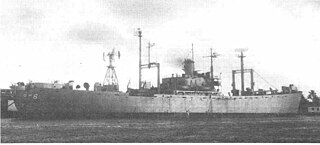
USS Locator (AGR/YAGR-6) was a Guardian-class radar picket ship, converted from a Liberty Ship, acquired by the US Navy in 1955. She was obtained from the National Defense Reserve Fleet and reconfigured as a radar picket ship and assigned to radar picket duty in the North Pacific Ocean as part of the Distant Early Warning Line.
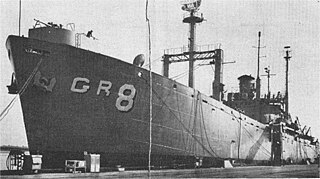
USS Interceptor (AGR-8/YAGR-8) was a Guardian-class radar picket ship acquired by the US Navy in 1955, from the "mothballed" reserve fleet. She was reconfigured as a radar picket ship and assigned to radar picket duty in the North Pacific Ocean as part of the Distant Early Warning Line.

USS Investigator (AGR/YAGR-9) was a Guardian-class radar picket ship, converted from a Liberty Ship, acquired by the US Navy in 1954. She was reconfigured as a radar picket ship and assigned to radar picket duty in the North Atlantic Ocean as part of the Distant Early Warning Line.
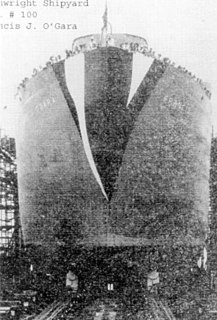
USS Outpost (AGR/YAGR-10) was a Guardian-class radar picket ship, converted from a Liberty Ship, acquired by the US Navy in 1956. She was reconfigured as a radar picket ship and assigned to radar picket duty in the North Atlantic Ocean as part of the Distant Early Warning Line.

USS Protector (AGR/YAGR-11) was a Guardian-class radar picket ship, converted from a Liberty Ship, acquired by the US Navy in 1957. She was reconfigured as a radar picket ship and assigned to radar picket duty in the North Atlantic Ocean as part of the Distant Early Warning Line.

USS Vigil (AGR/YAGR-12) was a Guardian-class radar picket ship, converted from a Liberty Ship, acquired by the US Navy in 1956. She was reconfigured as a radar picket ship and assigned to radar picket duty in the North Atlantic Ocean as part of the Distant Early Warning Line.

USS Interdictor (AGR/YAGR-13) was a Guardian-class radar picket ship, converted from a Liberty ship, acquired by the US Navy in 1954. She was reconfigured as a radar picket ship and assigned to radar picket duty in the North Pacific Ocean as part of the Distant Early Warning Line.
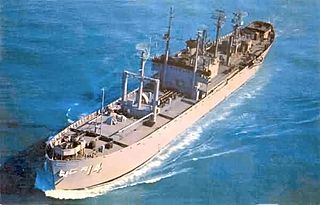
USS Interpreter (AGR-14) was a Guardian-class radar picket ship, converted from a Liberty Ship, acquired by the US Navy in 1957. She was reconfigured as a radar picket ship and assigned to radar picket duty in the North Pacific Ocean as part of the Distant Early Warning Line.

USS Tracer (AGR-15) was a Guardian-class radar picket ship, converted from a Liberty Ship, acquired by the US Navy in 1957. She was reconfigured as a radar picket ship and assigned to radar picket duty in the North Pacific Ocean as part of the Distant Early Warning Line.

USS Watchman (AGR-16) was a Guardian-class radar picket ship, converted from a Liberty Ship, acquired by the US Navy in 1958. She was reconfigured as a radar picket ship and assigned to radar picket duty in the North Pacific Ocean as part of the Distant Early Warning Line.

The Guardian-class radar picket ships were a class of ocean radar picket ships, converted 1954–1958 from World War II Liberty ships acquired by the U.S. Navy. Their task was to act as part of the radar defenses of the United States in the Cold War, serving until 1965.
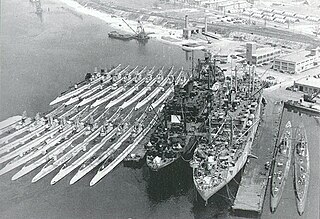
Atlantic Reserve Fleet, New London opened in 1946 at the Naval Submarine Base New London in Groton, Connecticut on the Thames River. The New London Reserve Fleet was 3 miles north of the city New London, Connecticut. Naval Submarine Base New London opened in 1868. The freshwater port became a good site to store both submarines and ships after World War II as part of the United States Navy reserve fleets. Three submarine tender ships were given the task of mothballing the submarines. The three ships: USS Apollo, USS Anthedon, USS Proteus (AS-19) cleaned the ship and sealed the subs with preservatives. It took a few years to process the over 50 submarines in the New London Reserve fleet. Some submarines there were reactivated for Korean War. By 1965 the fleet of World War II submarine were obsolete and the fleet had been scrapped.




















